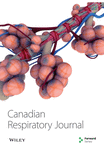Control of Asthma in Canada: Failure to Achieve Guideline Targets
Abstract
OBJECTIVE: To assess the degree of asthma control achieved by patients with asthma in Canada and to describe the impact of poor asthma control.
DESIGN: Population-based, cross-sectional telephone interview survey of Canadians with doctor-diagnosed asthma.
SUBJECTS AND METHODS: Random digit dialing was used to identify a representative sample of Canadians with asthma. A total of 801 adults and 200 parents of children aged four to 15 years were interviewed over the telephone. Telephone interviews were also conducted with 266 physicians.
RESULTS: Only 24% of patients achieved disease control by meeting the six symptom-based criteria listed by the 1996 Canadian Asthma Consensus Guidelines as appropriate treatment targets. Fifty-seven per cent of patients failed to meet two or more of the six control criteria and were considered poorly controlled. Fifty-one per cent had required urgent care for out of control asthma at least once in the year before the survey. Nonetheless, 91% of patients thought that their asthma was adequately controlled. Physicians shared this optimism: 77% of family physicians and 90% of respirologists believed that they were usually able to achieve optimal asthma control in their patients. Few physicians gauged asthma control by tracking more than one or two symptoms, and just over one-half (54%) of patients surveyed recalled ever having had a lung function test. One-half (48%) of patients with poorly controlled asthma who used inhaled steroids did not understand the role of inhaled steroids; onethird (32%) of patients with poorly controlled asthma who used short acting bronchodilators misunderstood the action of quick relief bronchodilators.
CONCLUSIONS: The majority of Canadians with asthma suffer from inadequate control of their disease. Suboptimal control of asthma is associated with excess health care use. Inadequate monitoring by physicians and poor patient education may be factors contributing to this problem.




